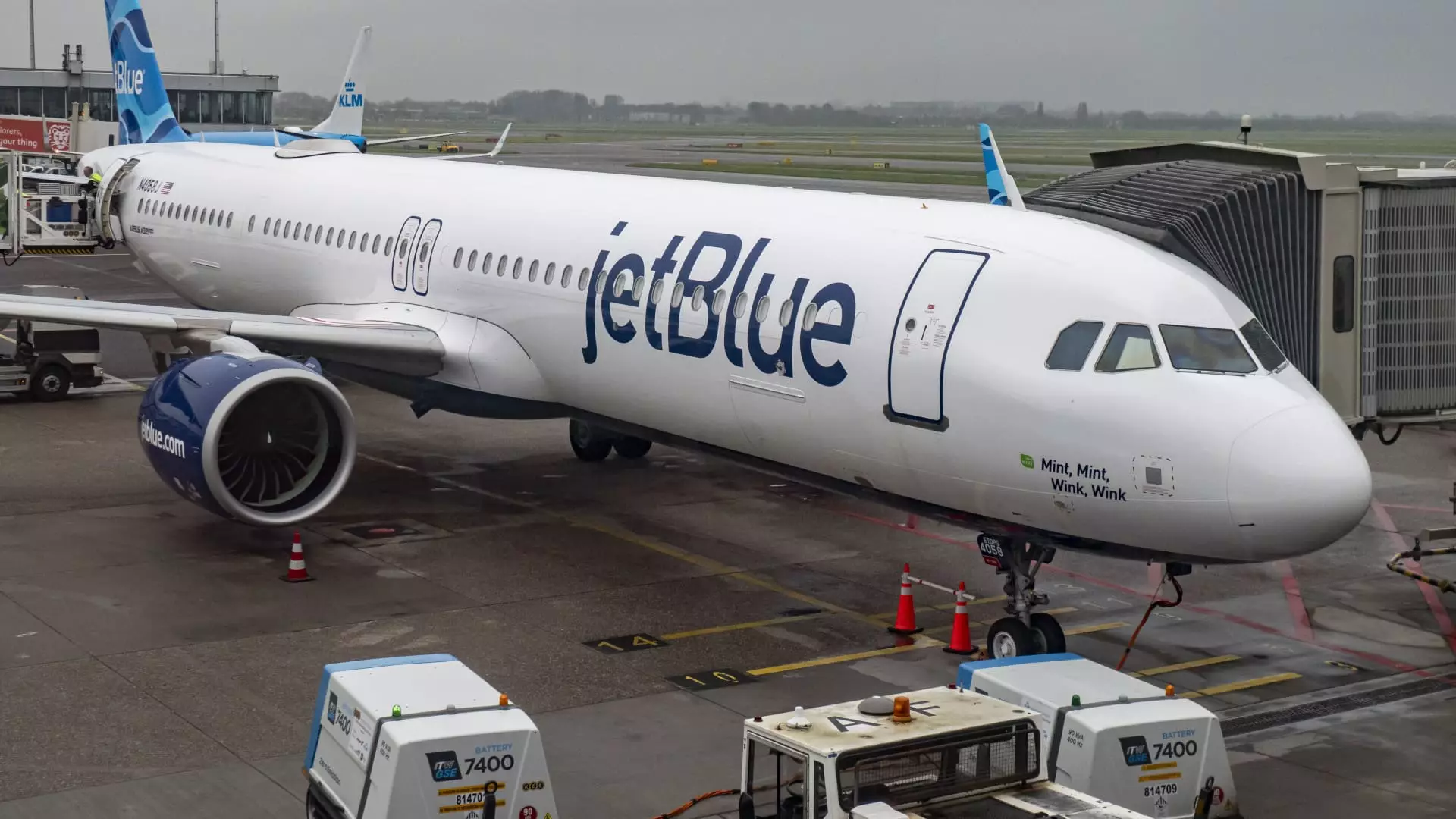JetBlue Airways, an established American carrier known for its innovative approach to air travel, is gearing up to introduce a much-anticipated domestic first-class seating option by 2026. This development is not merely a response to market demands but a strategic maneuver aimed at bolstering the airline’s financial performance and enhancing the overall customer experience. The decision comes as JetBlue seeks to navigate the challenging landscape of post-pandemic travel while simultaneously attracting higher-paying customers eager for more comfortable arrangements.
Marty St. George, the airline’s president, disclosed in a communication to employees that JetBlue’s Airbus aircraft, which currently lack the exclusive Mint class, will feature two or three rows of domestic first-class seats. This initiative is particularly interesting, as it embraces a hybrid approach dubbed “mini-Mint” or “junior Mint”—terms that suggest an adaptation of JetBlue’s premium service without duplicating it entirely for shorter domestic flights. The focus is clear: providing additional comfort while recognizing the limitations of significant luxury options on brief journeys.
Retrofitting airplanes to include these new first-class sections represents a pragmatic solution to a customer base that is increasingly willing to pay for additional comfort. As more travelers emerge from the constraints of the pandemic, many have expressed a preference for improved seating and enhanced service as part of their air travel experience. JetBlue appears keenly aware that meeting these demands is necessary for profitability, especially given the airline’s recent setbacks, including the failed acquisition of Spirit Airlines and an anticompetitive ruling against its partnership with American Airlines.
By tailoring their offerings to include domestic first-class options, JetBlue stands to capture a segment of the market that values space and comfort. St. George emphasizes that the creation of these new seats is intended to keep competitors on their toes, suggesting a robust commitment to innovation. While specific details about the setup and features of these first-class accommodations remain under wraps, the promise of change is tantalizing for many potential passengers.
Focus on Core Markets and Revamping Strategy
JetBlue’s renewed emphasis on core markets, particularly those in Florida and the Northeast, showcases its strategic pivot post-acquisition attempts. The airline has historically been a disruptor, introducing technology and service improvements such as seat-back entertainment and affordable business-class options. However, with a renewed focus on increasing revenue amid several competitive challenges, jetting up the value offered in premium seating positions its brand favorably against legacy carriers.
According to recent reports, JetBlue has identified underperforming routes for cuts while also broadening its European connections, such as launching a new flight from Boston to Madrid. This dual approach of optimizing existing services while exploring new markets reflects a comprehensive strategy geared towards sustainability and profitability.
This proactive move aligns with broader trends within the airline industry, where airlines adjust their business models based on shifting consumer preferences. With leisure travelers now willing to pay more for enhanced experiences, including additional legroom and exclusive services like airport lounges, JetBlue’s developments suggest a significant realignment of priorities.
Notably, Alaska Airlines recently announced plans to evaluate their premium seating as part of their growth strategy, further underscoring the competitive landscape. While JetBlue escalates its focus on premium seating, other airlines are similarly recalibrating their offerings to capture this lucrative segment of the market, thus indicating a larger industry-wide shift.
As JetBlue Airways prepares to expand its in-flight offerings with domestic first-class seats, it is poised to embrace the potential of a new market dynamic. The combination of innovative seating options, targeted market strategy, and a strong brand identity places JetBlue in a favorable position for not just recovery, but potentially, growth. Through these strategic changes, JetBlue sets the stage for a new era that could redefine affordable luxury within the airline industry, promising travelers an experience that may decidedly elevate their view of air travel.


Leave a Reply